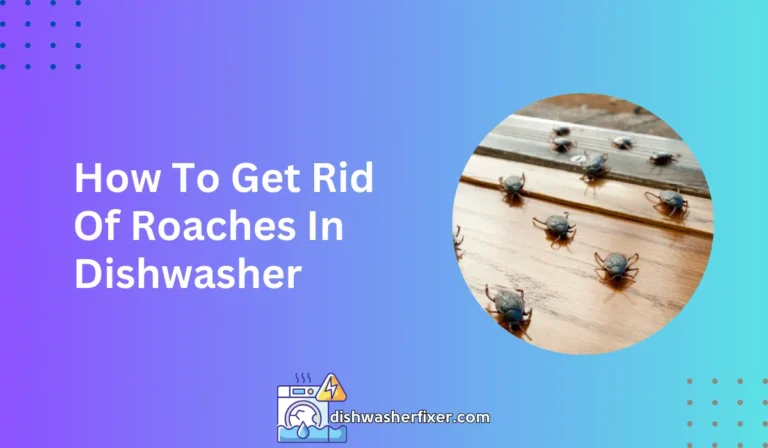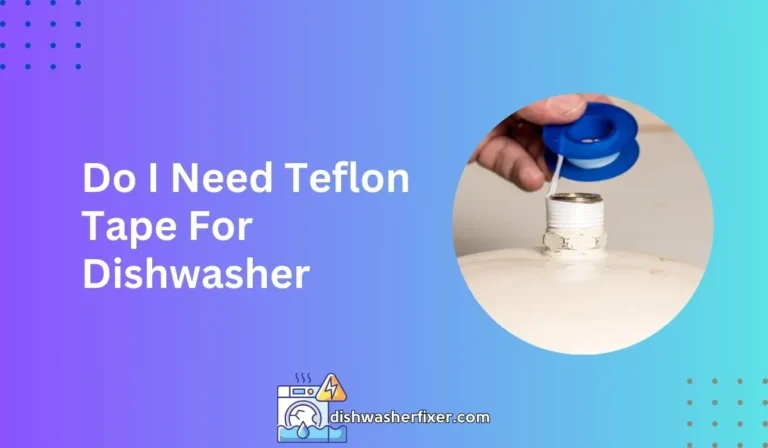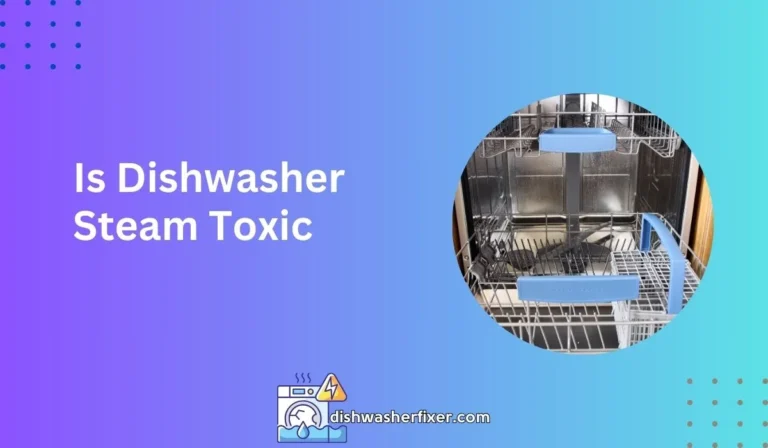How to Clean Dishwasher Drain Hose: Quick & Effective Tips
Disconnect power and remove the dishwasher’s lower front panel. Detach the drain hose, clear any blockages with a straightened wire hanger, and flush it with a vinegar-water solution. Reattach securely.
Step-by-Step Guide to Cleaning Your Dishwasher Drain Hose
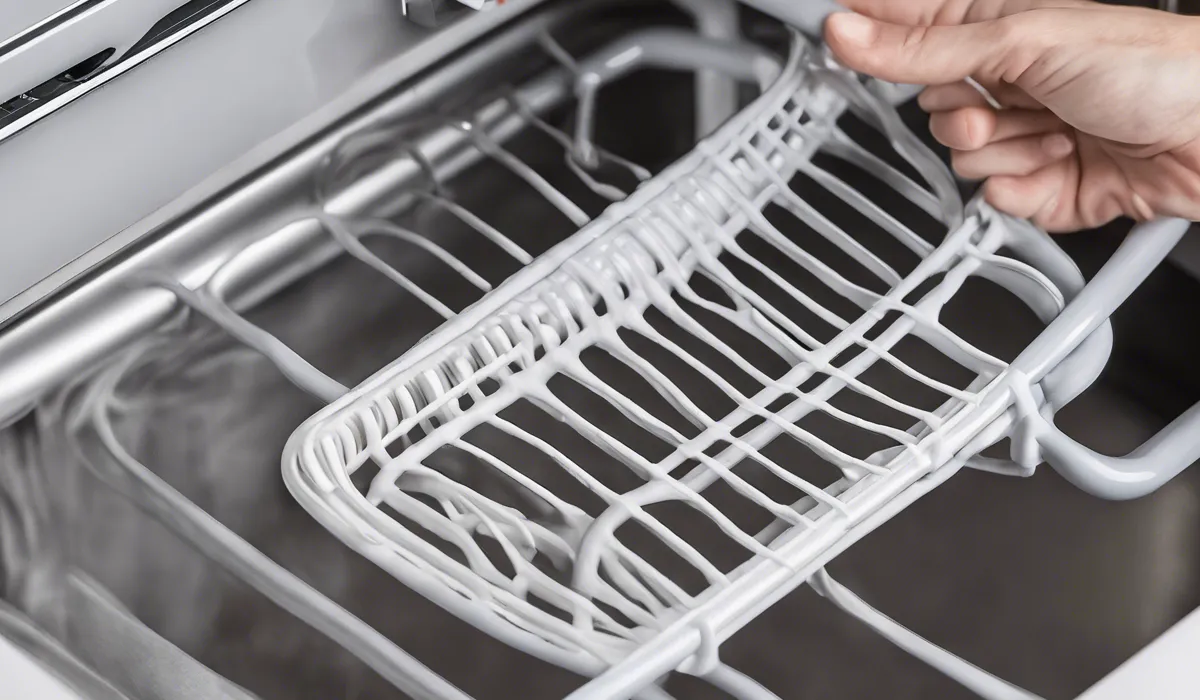
Importance of Regular Cleaning
Keeping your dishwasher in top shape requires routine maintenance, and one of the key components that need regular cleaning is the drain hose.
A clean drain hose ensures efficient water flow, prevents unpleasant odors, and extends the life of your dishwasher.
Overlooking this task can lead to a buildup of food particles and grease, causing poor performance or even damage to your appliance.
Signs of a Clogged Drain Hose
How do you know it’s time to clean your dishwasher’s drain hose? Look out for water backing up into the dishwasher, a persistent bad odor, or dishes not being cleaned properly.
These signs suggest a possible clog in your drain hose that needs immediate attention.
Tools and Materials Needed
Before you begin, gather the necessary tools and materials.
You’ll need a pair of pliers, a screwdriver, a straightened wire hanger or plumbing snake, baking soda, white vinegar, and towels for any spills.
With these at hand, you’re all set to tackle the cleaning process.
Disconnecting the Dishwasher and Drain Hose
Start by disconnecting the power to your dishwasher. This is a critical safety step. Next, remove the lower front panel by unscrewing it, which will reveal the drain hose connection to the dishwasher.
Draining Excess Water
Place a shallow pan or towels under the hose before detaching it to catch any water that may spill out. Gently detach the hose using pliers if necessary. Allow excess water to drain out completely to avoid a mess.
Locating the Drain Hose
The drain hose typically runs from the dishwasher to underneath the sink. Trace the hose to ensure you’re working on the correct one. Once located, check how it’s attached to the plumbing system.
Removing the Hose
With the dishwasher disconnected and the hose located, remove the hose from both the dishwasher and sink connections. Some hoses may be secured with clamps that you can loosen with a screwdriver or pliers.
Thoroughly Cleaning the Dishwasher Drain Hose

Preparing the Cleaning Solution
Mix a solution of hot water and vinegar in equal parts. Vinegar is a natural cleaner that can help dissolve grease and remove odors without damaging your drain hose.
Flushing the Hose with Baking Soda and Vinegar
Pour a half cup of baking soda into the drain hose, followed by the vinegar-water solution. The combination will fizz and help break down any residue inside the hose. Let it sit for a few minutes to work its magic.
Using a Straightened Wire Hanger or Plumbing Snake
If the clog persists, carefully insert a straightened wire hanger or a plumbing snake into the hose to dislodge any blockages. Be gentle to avoid damaging the hose. Pull out any debris that may be causing the clog.
Rinsing the Hose with Hot Water
After the initial cleaning, rinse the hose with hot water to wash away any remaining residue. You can do this by running water through the hose or by soaking it in a bucket of hot water.
Checking for Damage or Wear
While the hose is disconnected, inspect it for any signs of damage or wear. If you notice any cracks or holes, it’s time to replace the hose to prevent leaks and ensure efficient operation.
Reattaching and Maintaining the Dishwasher Drain Hose
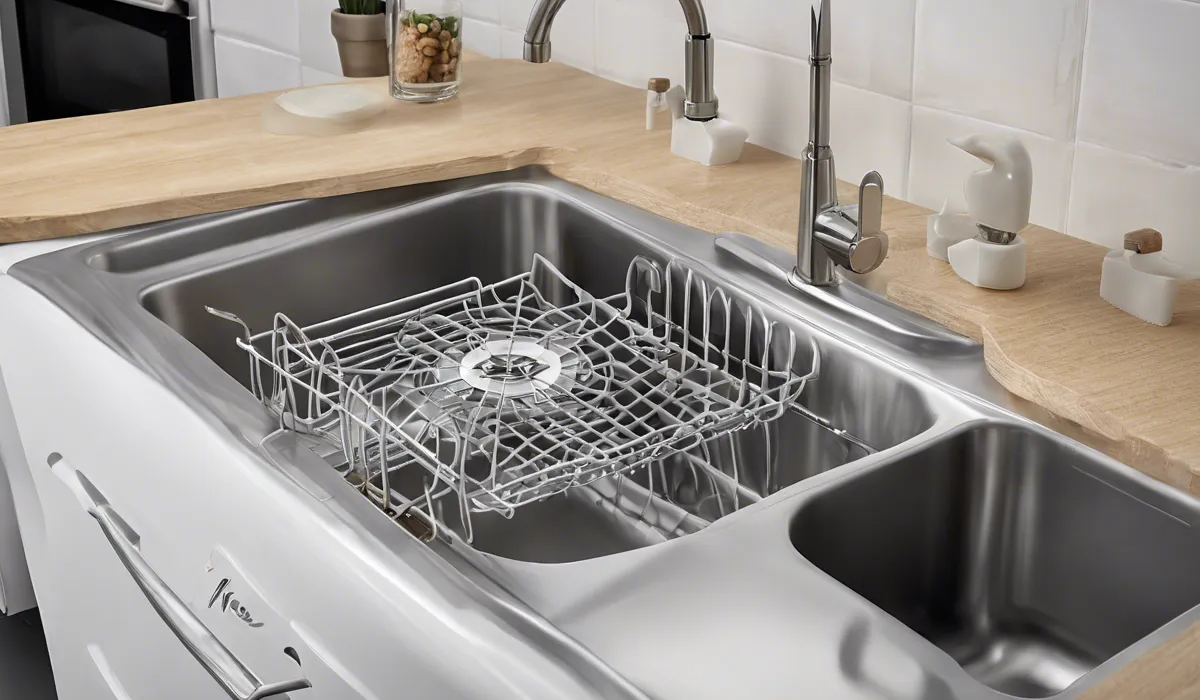
Securing the Hose to the Dishwasher and Sink
Once the hose is clean and inspected, reattach it to the dishwasher and sink. Make sure the connections are secure and the clamps are tightened to prevent any leaks.
Testing for Leaks
After reassembly, run a short cycle to test for leaks. Check the connections while the dishwasher is running and after the cycle is complete to ensure everything is watertight.
Tips for Preventing Future Clogs
To minimize the risk of future clogs, scrape off food particles from dishes before loading them into the dishwasher. Regularly clean the filter and seals, and consider using a dishwasher cleaner once a month to maintain cleanliness.
Regular Maintenance Schedule
Establish a regular maintenance schedule for your dishwasher.
Cleaning the drain hose every few months can prevent buildup and keep your dishwasher running smoothly. Mark it on your calendar as a reminder.
When to Consider Professional Help
If you’ve followed these steps and still experience problems with your dishwasher, it may be time to seek professional help.
A skilled technician can diagnose and fix any underlying issues that may not be apparent to the average homeowner.
FAQs About Cleaning Dishwasher Drain Hose
How do I disconnect the power before cleaning the dishwasher drain hose?
Before cleaning the dishwasher drain hose, disconnect power by unplugging the dishwasher from the electrical outlet or switching off the circuit breaker that controls it.
What is the first step in accessing the dishwasher drain hose?
To access the dishwasher drain hose, you should first disconnect power and then remove the dishwasher’s lower front panel.
How can I clear a blockage from the dishwasher drain hose?
Clear any blockages in the dishwasher drain hose by using a straightened wire hanger to dislodge debris and then flush the hose with a vinegar-water solution.
What solution should I use to flush the dishwasher drain hose?
To flush the dishwasher drain hose, use a mixture of vinegar and water, which will help remove buildup and eliminate odors.
How do I ensure the dishwasher drain hose is reattached securely?
Reattach the dishwasher drain hose by firmly securing the clamps or connectors to prevent leaks. Ensure it is fastened to both the dishwasher and the sink drain or garbage disposal.
Final Thoughts
To clean the dishwasher drain hose, ensure the power is disconnected and remove the lower front panel.
The drain hose should be detached, then cleared with a wire hanger, and flushed with a vinegar-water mix. After cleaning, reattach the hose securely to prevent leaks or further clogs.
Useful Resources
- https://docs.legis.wisconsin.gov/document/administrativecode/SPS%20382.33
- https://agriculture.ks.gov/docs/default-source/fsl–handouts/67-licensing-requirements-fp.pdf?sfvrsn=bace89c1_4
- https://www.kingcounty.gov/en/dept/dph/health-safety/environmental-health/plumbing-gas-piping/installations/drainage-venting-fixture-unit-values
